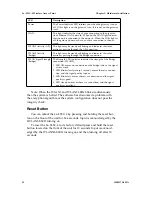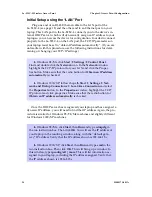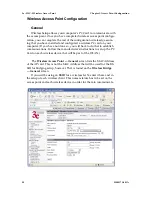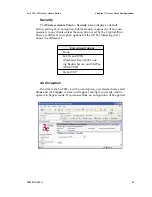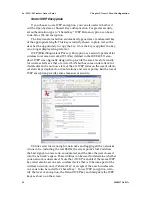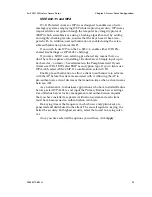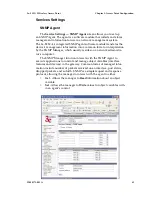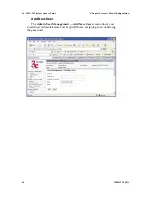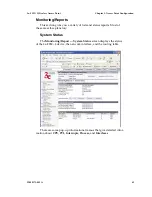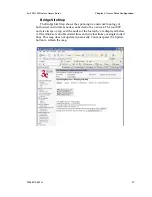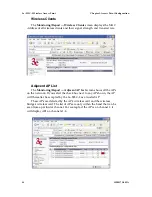
3e–525C–3 Wireless Access Point
Chapter 3: Access Point Configuration
34
29000171-001 A
3e–525C–3 Wireless Access Point
Chapter 3: Access Point Configuration
29000171-001 A
35
Static WEP Encryption
If you choose to use WEP encryption, you can also select whether it
will be Open System or Shared Key authentication. For greater security,
set authentication type to “shared key.” WEP Data encryption can be set
to 64-bit or 128-bit encryption.
The Key Generator button automatically generates a randomized key
of the appropriate length. This key is initially shown in plain text so the
user has the opportunity to copy the key. Once the key is applied, the key
is no longer displayed in plain text.
WEP (
W
ired
E
quivalent
P
rivacy) Encryption is a security protocol for
wireless local area networks (WLANs) defined in the IEEE 802.11 stan-
dard. WEP was originally designed to provide the same level of security
for wireless LANs as that of a wired LAN but has come under attack for
its defaults and is not now state of the art. WEP relies on the use of identi-
cal static keys deployed on client stations and access points. But the use of
WEP encryption provides some measure of security.
Utilities exist for scanning for networks and logging all the networks
it runs into—including the real SSIDs, the access point’s MAC address,
the best signal-to-noise ratio encountered, and the time the user crossed
into the network’s space. These utilities can be used to determine whether
your network is unsecured. Note that, if WEP is enabled, that same WEP
key must also be set on each wireless device that is to become part of the
wireless network, and, if "shared key" is accepted, then each wireless de-
vice must also be coded for "shared key". To use WEP encryption, iden-
tify the level of encryption, the Default WEP key and designate the WEP
keys as shown on the screen.



